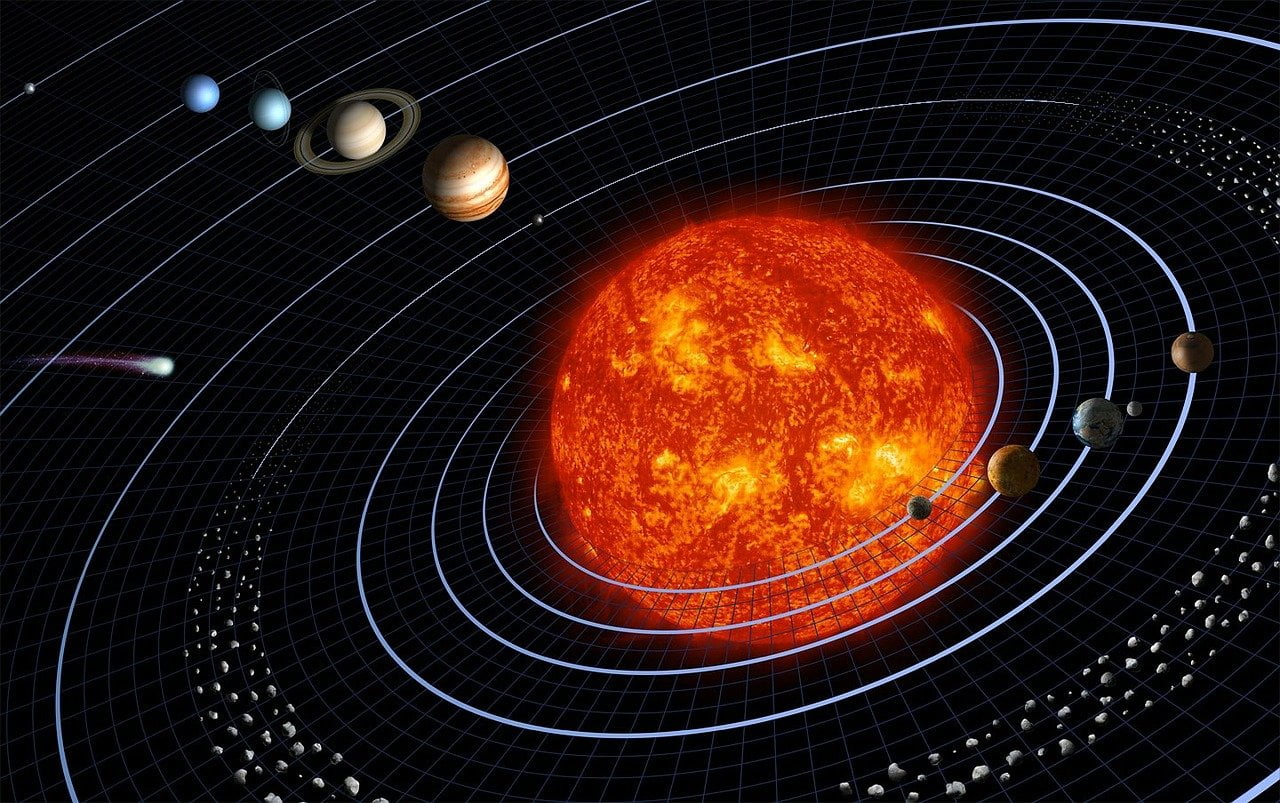
Our solar system is a vast and awe-inspiring collection of celestial bodies, including the Sun, eight planets, numerous moons, asteroids, comets, and other cosmic debris. It’s a realm of extremes, where temperatures soar to scorching heat and plunge to frigid cold, where gravity shapes the orbits of countless objects, and where the forces of nature play out in dramatic and mesmerizing ways.
Here, we’ll delve into some of the most frequently asked questions about our solar system, exploring its wonders and answering queries that have intrigued humankind for centuries (TOP 20 Google search questions about Solar System).
1. How Many Planets Are in Our Solar System?
There are eight planets in our solar system:
2. What is the Hottest Planet in Our Solar System?
The hottest planet in our solar system is Venus. Its surface temperature averages a scorching 864 degrees Fahrenheit (462 degrees Celsius), hot enough to melt lead. This intense heat is due to Venus’s thick atmosphere, which traps solar radiation and prevents heat from escaping.

3. What is the Smallest Planet in Our Solar System?
The smallest planet in our solar system is Mercury. It’s only about 3,031 miles (4,878 kilometers) in diameter, smaller than Earth’s Moon. Mercury’s small size and proximity to the Sun make it a challenging place to explore.

4. Which Planet is Closest to the Sun?
The closest planet to the Sun is Mercury. It orbits our star at an average distance of about 36 million miles (58 million kilometers). Mercury’s rapid orbit around the Sun takes only 88 Earth days.
5. Which Planet is Farthest from the Sun?
The farthest planet from the Sun is Neptune. It orbits at an average distance of about 2.8 billion miles (4.5 billion kilometers). Neptune’s vast orbit takes 164.7 Earth years to complete.

6. What is the Largest Planet in Our Solar System?
The largest planet in our solar system is Jupiter. It’s a giant gas planet with a diameter about 11 times that of Earth. Jupiter’s immense size is due to its large amount of hydrogen and helium gas.

7. What is the Difference Between a Planet and a Dwarf Planet?
A planet is defined as a celestial body that meets three criteria:
- It must be in orbit around the Sun.
- It must be massive enough to have a rounded shape under its own gravity.
- It must have cleared the neighborhood around its orbit.
A dwarf planet meets the first two criteria but has not cleared its neighborhood. Pluto, formerly considered a planet, is now classified as a dwarf planet.
8. What is the Asteroid Belt?
The asteroid belt is a region of space between the orbits of Mars and Jupiter. It’s composed of billions of rocky bodies, the remnants of the early solar system. The largest asteroid in the belt, Ceres, is now classified as a dwarf planet.

9. What is the Kuiper Belt?
The Kuiper Belt is a vast ring-shaped region beyond Neptune’s orbit. It’s home to billions of icy bodies, some of which are dwarf planets like Pluto. The Kuiper Belt is thought to be the source of many comets.
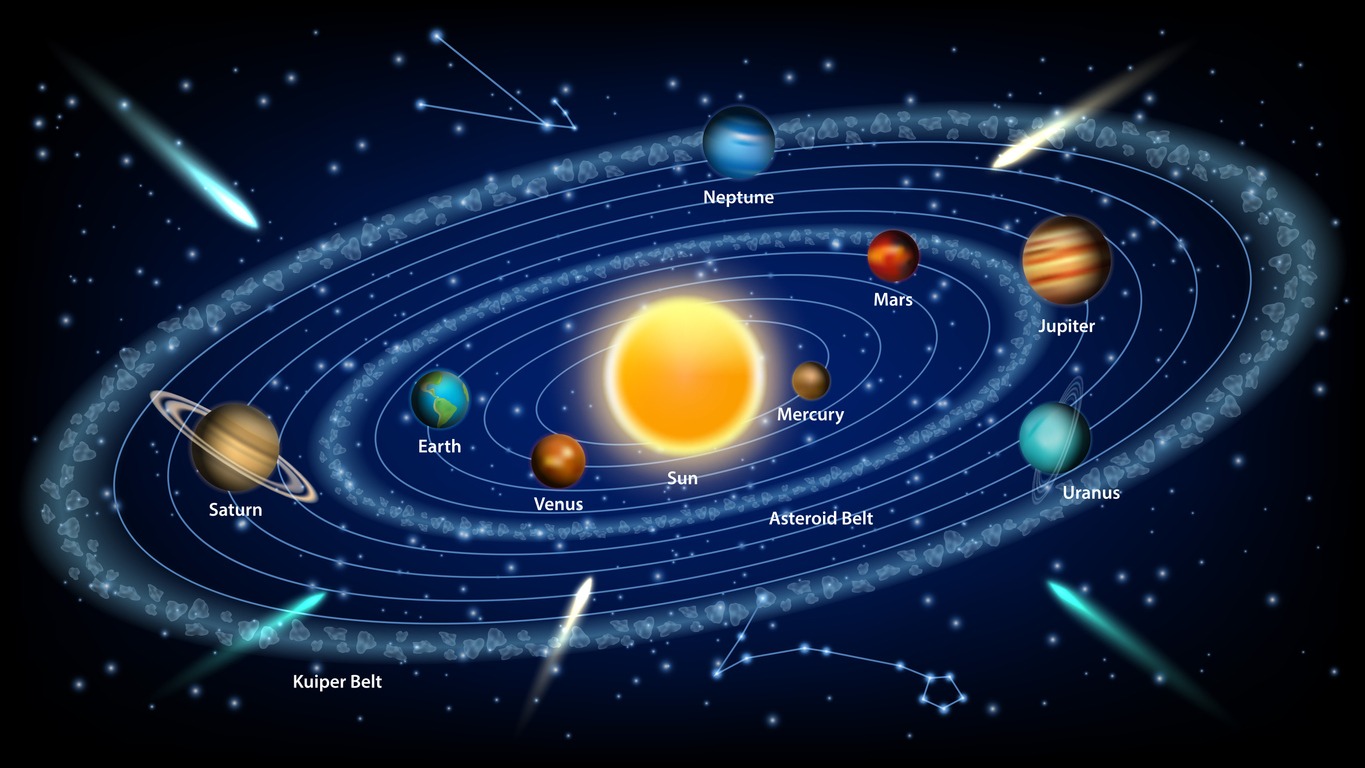
10. What is the Oort Cloud?
The Oort Cloud is a spherical region of icy bodies that extends far beyond the Kuiper Belt. It’s thought to be the source of long-period comets, those that take thousands or even millions of years to orbit the Sun.
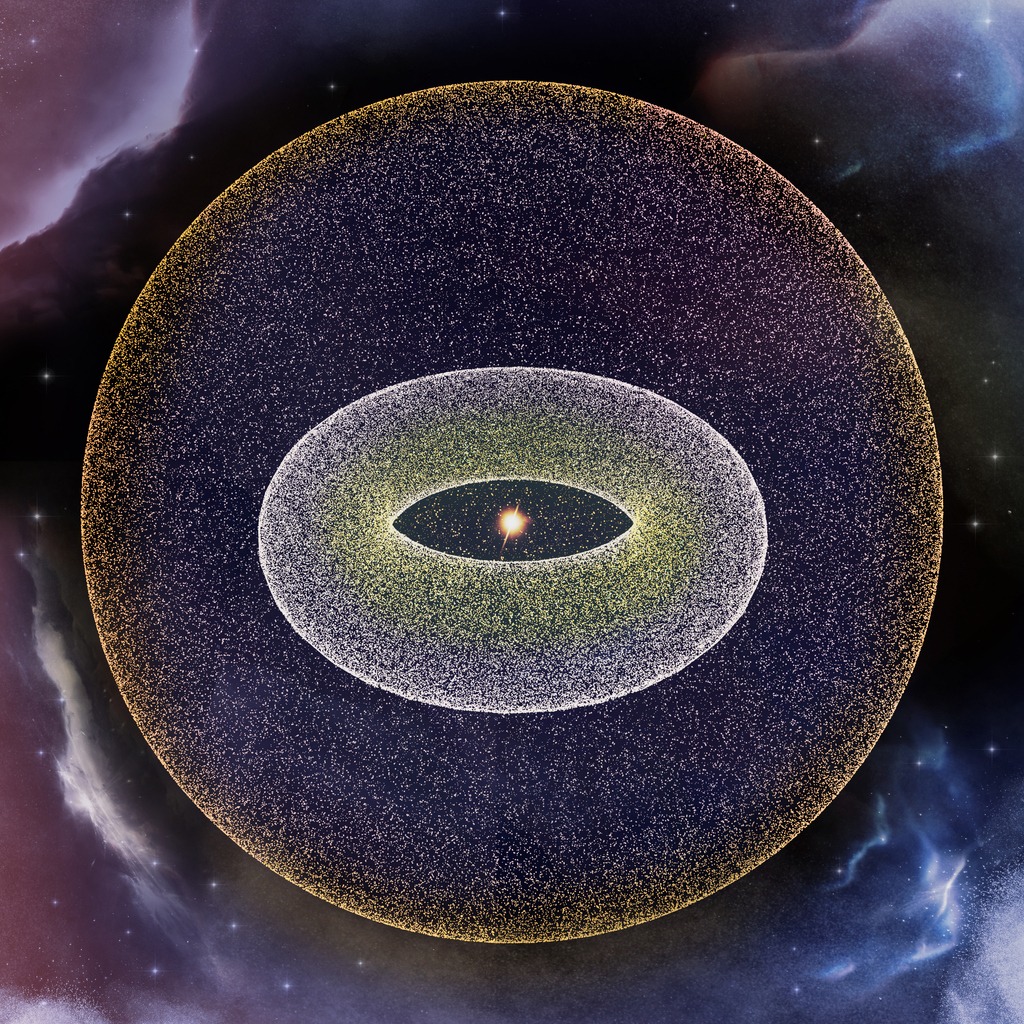
11. What are the Different Types of Moons in Our Solar System?
Moons come in a variety of sizes, shapes, and compositions. Most moons are spherical and composed of rock or ice. Some moons, like Earth’s Moon, have their own atmospheres and liquid water on their surfaces. Others, like the moons of Jupiter and Saturn, are captured asteroids or comets.
12. How Did the Solar System Form?
Our solar system formed about 4.57 billion years ago from a cloud of gas and dust called a nebula. As the nebula contracted under the force of gravity, it flattened into a disk, with most of the mass concentrated in the center. The center of the disk eventually became so hot and dense that nuclear fusion began, marking the birth of the Sun.
The remaining gas and dust in the disk continued to clump together under gravity, forming the planets, moons, asteroids, comets, and other objects that make up our solar system. The planets formed in different regions of the disk, depending on the composition of the material there. The inner planets, Mercury, Venus, Earth, and Mars, are made mostly of rock and metal because they formed closer to the Sun, where the temperature was too high for ice to condense. The outer planets, Jupiter, Saturn, Uranus, and Neptune, are made mostly of gas and ice because they formed farther from the Sun, where temperatures were cooler.
The formation of our solar system was a complex and ongoing process that took millions of years to complete. The planets continued to evolve after their formation, accreting mass, differentiating into layers, and developing atmospheres and magnetic fields. Our solar system is still a dynamic and changing place, with ongoing processes such as planetary migration, asteroid impacts, and the formation of new moons.
13. What is the Sun Made of?
The Sun is a giant ball of hot gas, mostly hydrogen and helium. Its core is incredibly hot, reaching temperatures of about 27 million degrees Fahrenheit (15 million degrees Celsius). This intense heat drives nuclear fusion reactions, converting hydrogen into helium and releasing enormous amounts of energy.

14. How Does the Sun Generate Energy?
The Sun generates energy through a process called nuclear fusion. In the Sun’s core, hydrogen atoms are compressed and heated to such high temperatures that they fuse together, forming helium atoms. This process releases a tremendous amount of energy, which radiates outward from the Sun’s core, powering its brilliant light and heat.
15. What is a Solar Eclipse?
A solar eclipse occurs when the Moon passes between the Sun and Earth, blocking our view of the Sun. This can only happen when the Moon is in its new moon phase and is positioned directly between the Sun and Earth. Solar eclipses can be total, partial, or annular, depending on the distance between the Moon and Earth at the time of the eclipse.

16. What is a Lunar Eclipse?
A lunar eclipse occurs when the Earth passes between the Sun and the Moon, casting a shadow on the Moon’s surface. This can only happen when the Moon is in its full moon phase and is positioned directly opposite the Sun from Earth. Lunar eclipses are always total, meaning the entire Moon is covered by Earth’s shadow.
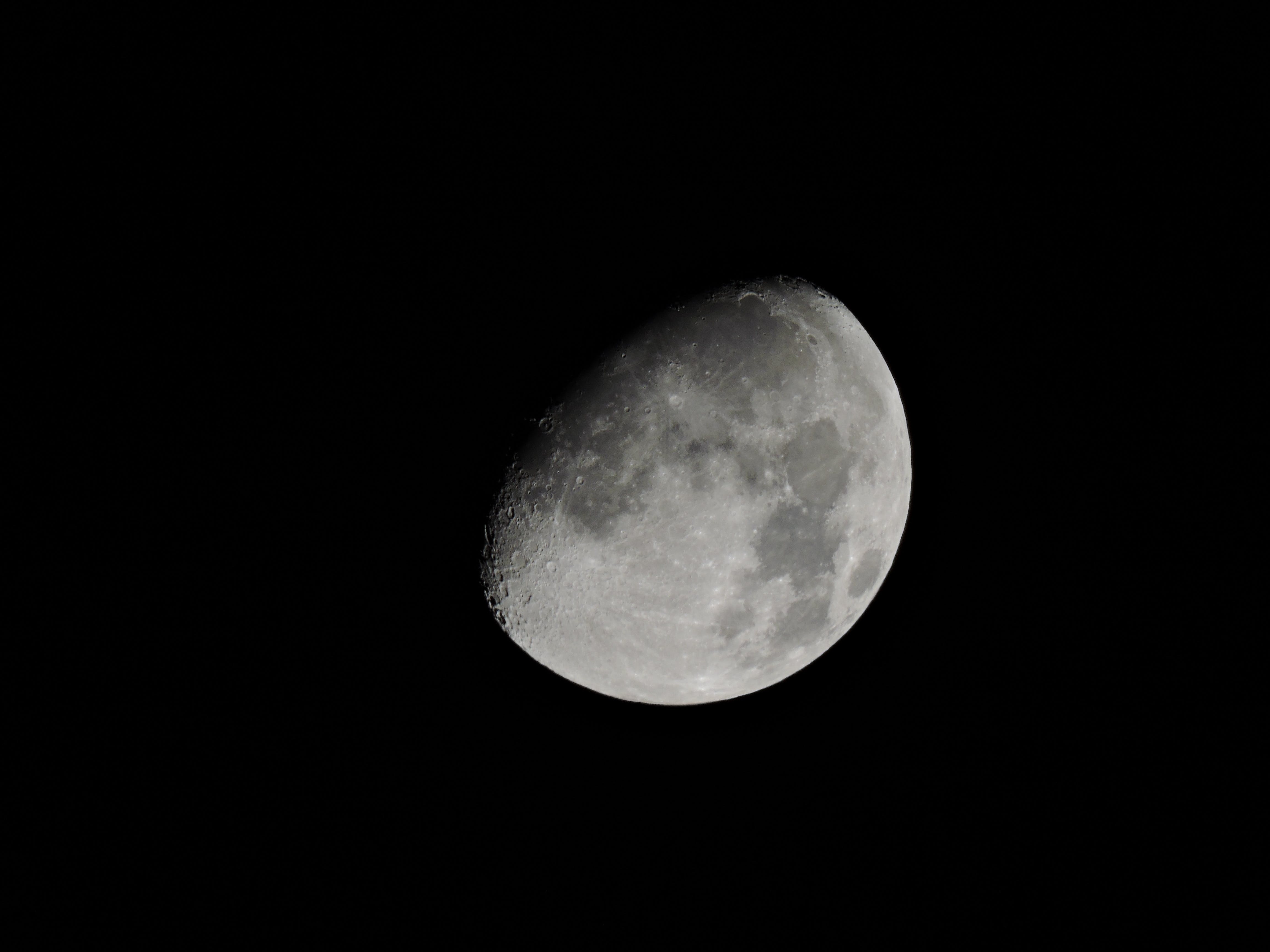
17. What are Comets?
Comets are icy bodies that orbit the Sun. They are formed in the outer reaches of the solar system, in the Kuiper Belt and Oort Cloud. When a comet approaches the Sun, its icy surface vaporizes, forming a tail that can extend millions of miles into space. Comets are known for their spectacular displays of light and color.
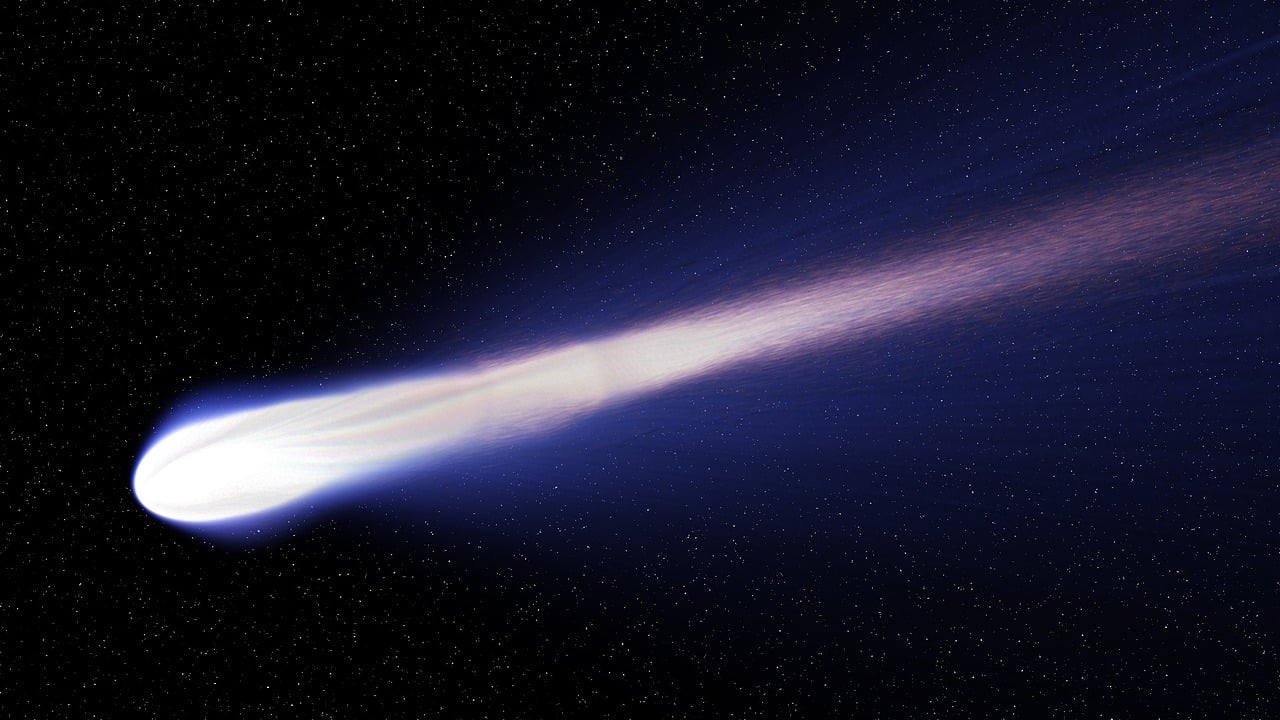
18. What are Asteroids?
Asteroids are rocky bodies that orbit the Sun. They are remnants of the early solar system, left over from the formation of the planets. Asteroids range in size from tiny pebbles to dwarf planets. The largest asteroid is Ceres, which is located in the asteroid belt between Mars and Jupiter.
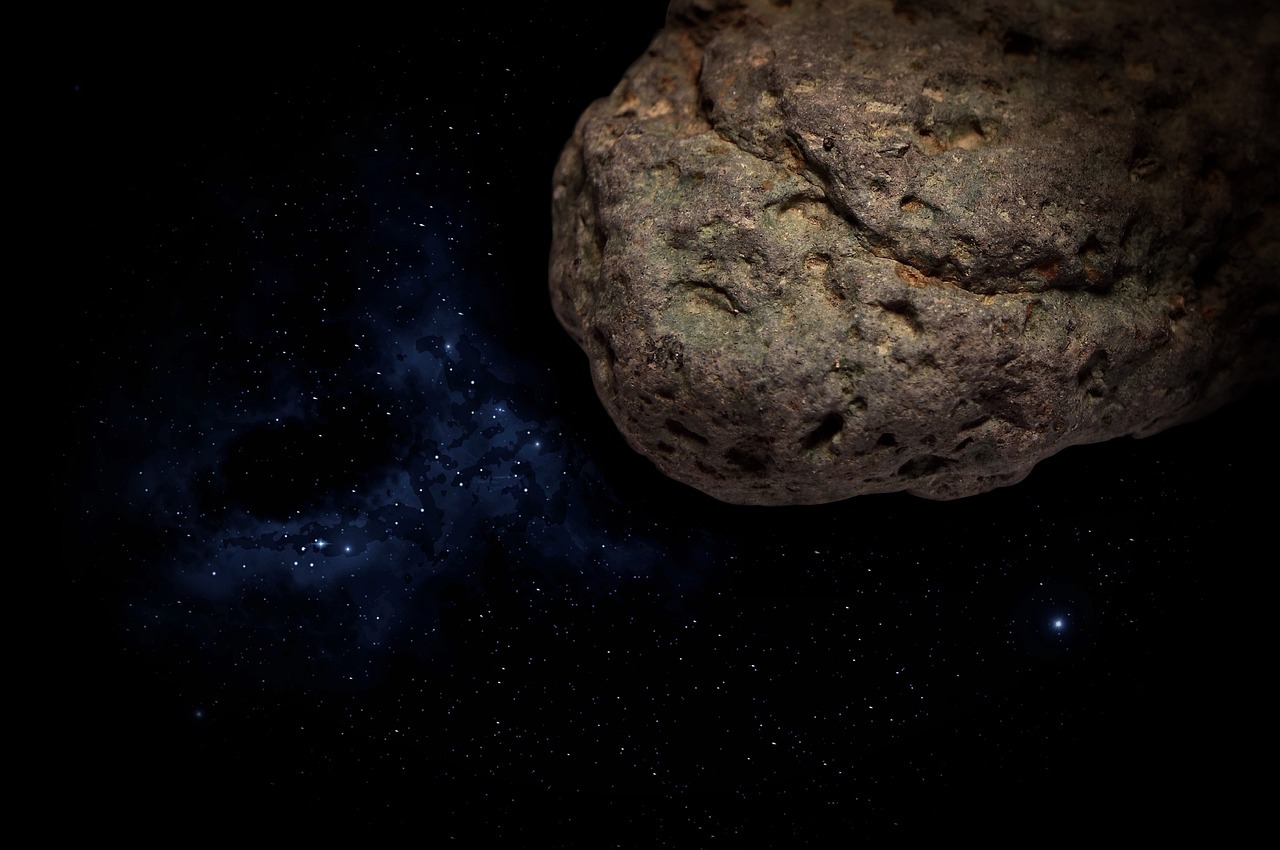
19. What are Meteors?
Meteorites are small pieces of rock or metal that enter Earth’s atmosphere. When they heat up due to friction, they glow brightly and streak across the sky. Most meteors burn up completely in the atmosphere, but some larger ones reach the ground and are called meteorites.
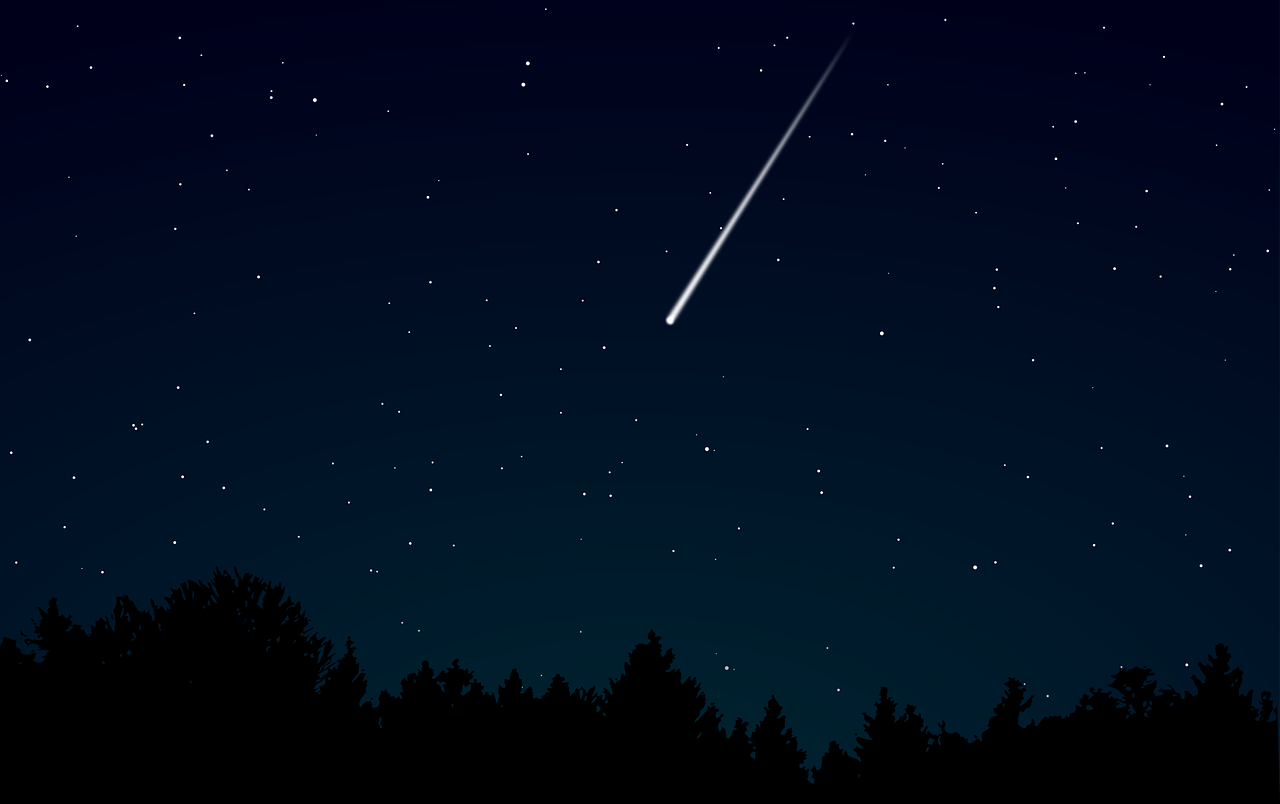
20. What is the Search for Extraterrestrial Life (SETI)?
SETI, which stands for Search for Extraterrestrial Intelligence, is the quest to find evidence of intelligent life beyond Earth. Scientists use various methods to search for extraterrestrial life, including radio telescopes, infrared telescopes, and optical telescopes. While no definitive evidence of extraterrestrial life has been found, the search continues, fueled by the possibility of finding life elsewhere in the universe.
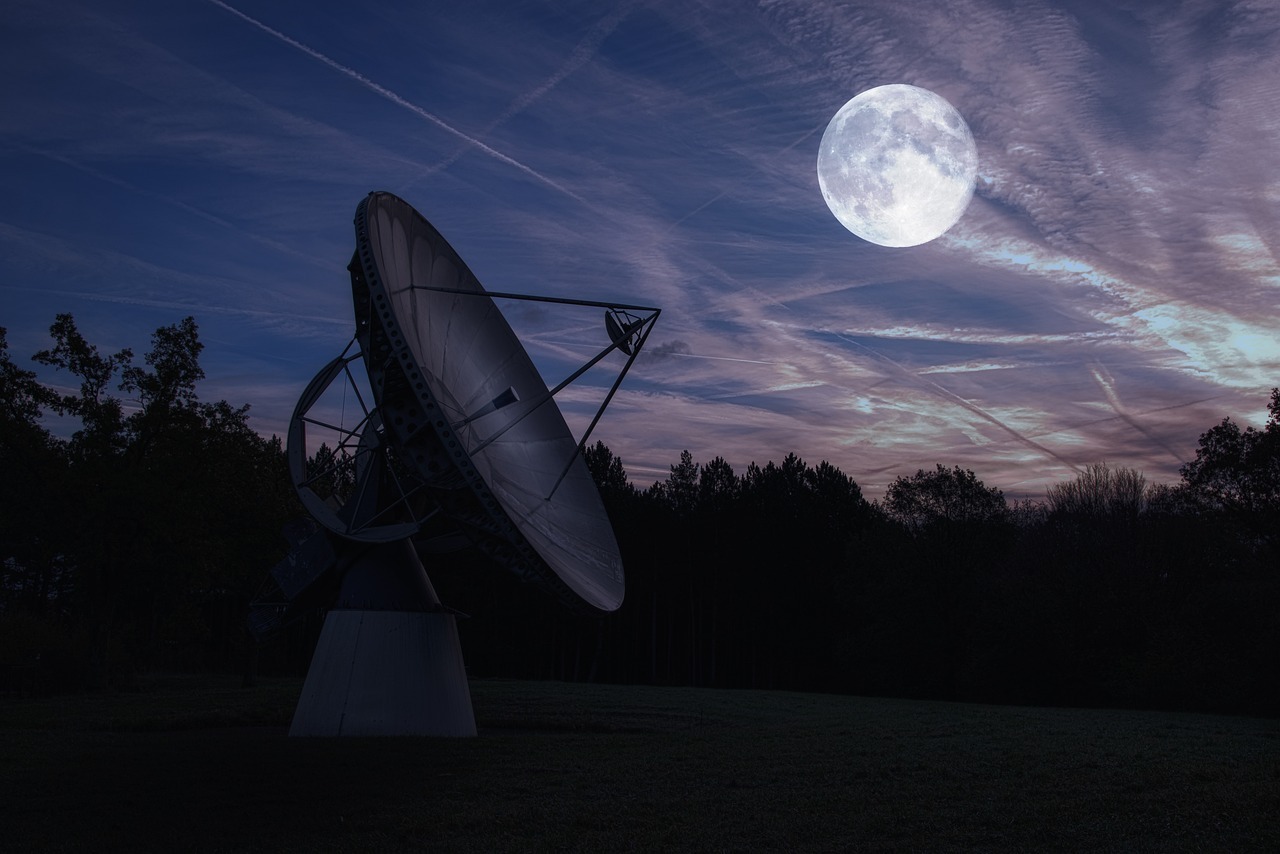
You may also like:
Mercury: The Closest Planet to the Sun
Venus: The Earth’s Twin or a Very Different Planet?
Mars: Comprehensive Exploration, unveiling the Mysteries
Jupiter: A Cosmic Giant – Symphony of Storms
Saturn: A Gaseous Giant with Enthralling Rings and Diverse Moons
Bibliography
- Introduction to Astronomy and Astrophysics by Michael A. Zeilik and Stephen A. Gregory (2005)
- Planets and Dwarf Planets: The Formation, Evolution, and Diversity of Planetary Systems by William K. Hartmann (2009)
- The Formation and Evolution of Planets in the Solar System by Jack J. Lissauer and David J. Stevenson (2014)
- The Solar System by Philip Stooke (2009)
- Planetary Science: A New Synthesis by David Morrison et al. (2005)
- The Planets: A Very Short Introduction by Philip Stooke (2017)
- The Sun: A Very Short Introduction by John Mason (2012)
- Comets: A Very Short Introduction by Colin Snodgrass (2014)
- Asteroids: A Very Short Introduction by Peter Brown (2015)
- Meteors, Meteorites and Meteoroids: A Very Short Introduction by David Whitehouse (2015)
- Life in the Universe by Stephen Hawking and Leonard Mlodinow (2010)
- The Search for Extraterrestrial Intelligence by Seth Shostak (2009)
- Extraterrestrial Life Evidence and the Search for the Holy Grail by Richard C. Hoagland (2018)

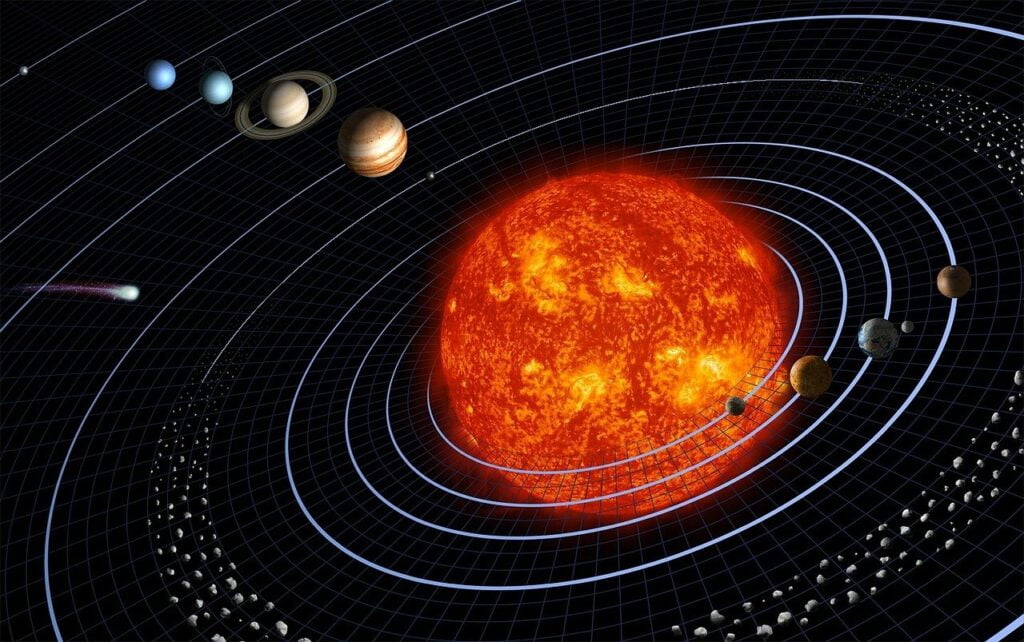
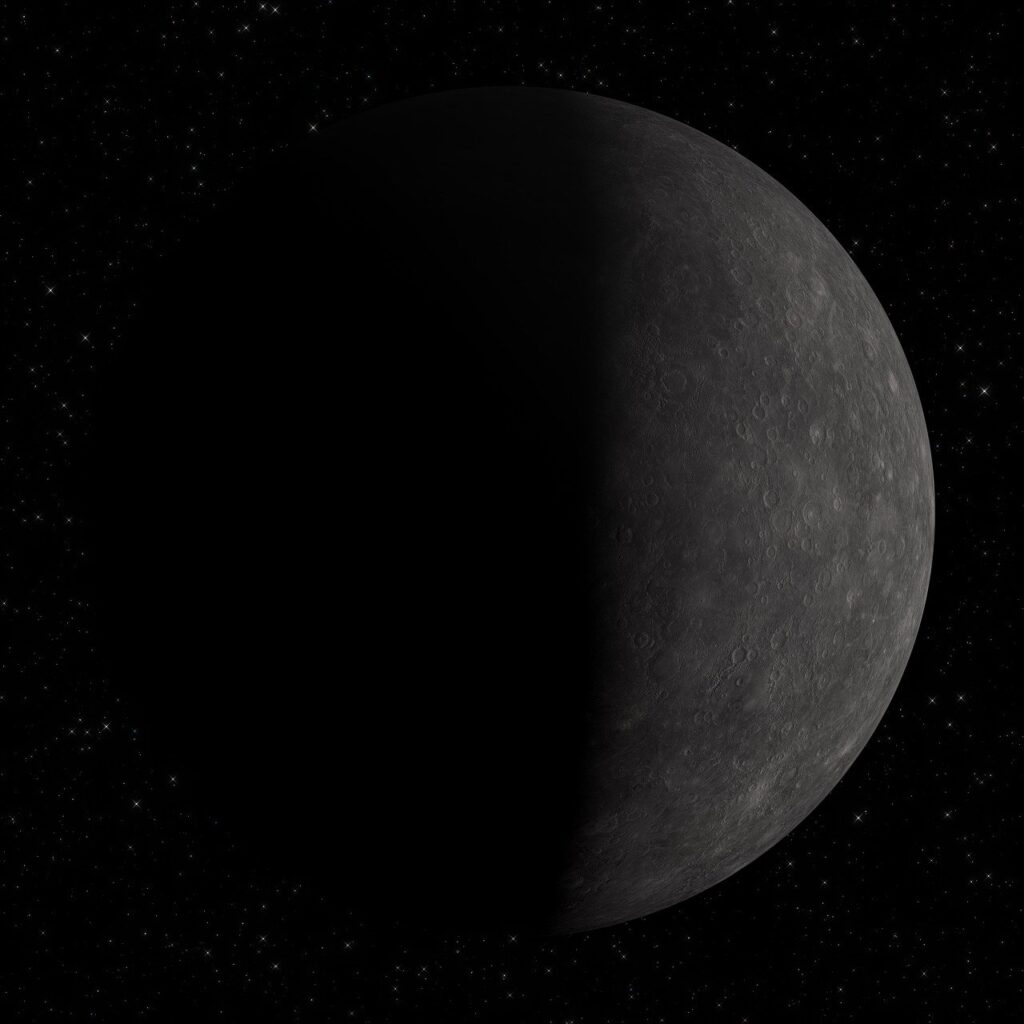
Pingback: Mercury FAQ – top 10 questions – Nobrainair
Pingback: Venus FAQ – TOP 10 questions – Nobrainair
Pingback: Mars FAQ – TOP 10 questions – Nobrainair
Pingback: The Sun FAQ – TOP 10 questions – Nobrainair
Pingback: Jupiter: A Cosmic Giant – Symphony of Storms – Nobrainair
Pingback: Jupiter FAQ – TOP 10 questions – Nobrainair
Pingback: Jupiter: A Cosmic Giant – Symphony of Storms - NoBrainAir - Love Science
Pingback: Jupiter FAQ – TOP 10 questions - NoBrainAir - Love Science
Pingback: The Sun FAQ – TOP 10 questions - NoBrainAir - Love Science
Pingback: Venus FAQ – TOP 10 questions - NoBrainAir - Love Science
Pingback: Mars FAQ – TOP 10 questions - NoBrainAir - Love Science